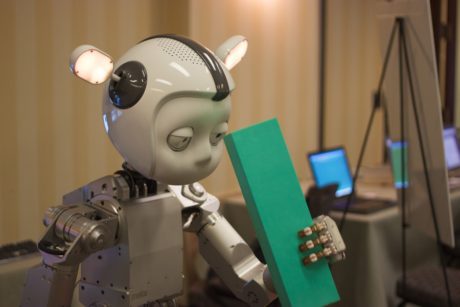– by Guido Belforte
Soft robotics is becoming one of the workhorses of the new developments of industrial robotics, and not only industrial. After years during which robotics has developed and successfully spread in manufacturing lines of mass industrial products (especially automotive and household appliances), with plants engaged to carry out complex repetitive operations, today robotics addresses sectors where the changeover becomes fundamental and the batch becomes small-size.

All that implies a strong route change. Flexibility calls not only for setting the structure of plants differently but also especially for the possibility of using manufacturing lines where the alternation of different products is the standard. In complex operations, this can imply strong difficulties, which suggest the employment of human operators availing themselves of machines able to interact easily and safely. These machines, able to collaborate with operators in a shared workspace, are cobots or co-robots, that is to say collaborative robots, which constitute one of the elements of Industry 4.0. These new robots are considered the robots of the future, as they can interact with man to make the work of both more efficient, with a setup deeply differing from traditional robots’, structured to execute their task without interacting with man, in totally separated workspaces.
Simultaneously with the development of cobots, emerges the need of new gripping organs that, analogously, must assure a broad manoeuvring flexibility, unlike standard industrial gripping organs that are scarcely or not at all adaptable to variable and not well-defined situations. Today, flexible gripping devices, which can suit the grasp of objects with different shape and consistency, start being proposed and offered on the market: with suction cups, with compliant-structure fingers, with flexible pneumatic-drive fingers, with inflatable bag and so on.
All this is part of the soft robotics, whose applications are extending in various fields, from the exploration of the external world to biomedical, agricultural and other applications, with absolutely innovative devices and complex systems. In all that, pneumatic technology very often plays a fundamental role, since many devices provide for a pneumatic-type motion or they use compressed air to produce the necessary vacuum for the operation of suction cups.
Everything new, then? Not completely. If we go back in time to the Eighties of last century, while industrial robotics had clearly undertaken its development with high-repeatability techniques for mass-productions, soft adaptive gripping elements were proposed from various sources, finally yet importantly, flexible corrugated fingers sold on the market for gripping items of various sizes. In the Nineties, there was a significant development of prototypes of flexible pneumatic actuators with separate chambers, able to carry out bending movements on different planes and/or shortening and stretching by using apposite elastic structures with various constraints. Mainly starting from Japanese Universities’ proposals, they developed various prototypes of pneumatically-driven handling and gripping robotic devices that, however, had no industrial outcomes owing to the lacking applicative interest in devices of that kind at that time.
Today, in a different context, that type of device is topical again. This, on the other hand, witnesses that soft robotics is over thirty years old, reminding once more that between the ideation of a new item and its transformation into an industrial product decades of years may go by, as they are necessary to mature the useful conditions for its application.



